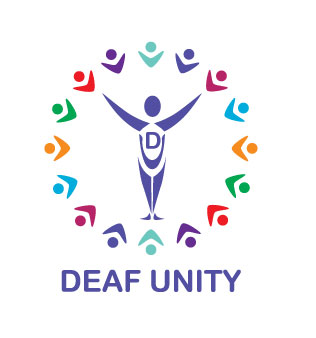Remote working can be exhausting and frustrating for the hard of hearing and those who rely on sign language and/or lipreading. In this article, Tamara Marshall explores the biggest challenges and suggests how to manage them to boost your productivity and wellbeing.
In many ways, remote and hybrid working has brought positive change, particularly to work-life-balance and job satisfaction. On the flip side, there are more challenges and obstacles to navigate – especially for those with additional accessibility needs.
Working remotely with a hearing loss can be frustrating and exhausting. Day to day communication, collaboration and problem-solving techniques are limited to calls and emails, which can be very intensive – requiring a more ‘tuned-in’, ‘always on’ approach to keep up.
If you’re deaf or hard of hearing and working remotely – or you know someone who is – keep reading to better understand the challenges and how to help manage the impact this ‘new normal’ has on productivity and wellbeing.

Top challenges of deafness in a remote or hybrid workplace
Increased concentration and listening fatigue
If you use the telephone, then working remotely means that you are likely to receive calls which are essential for connecting with colleagues; but having several calls throughout the day is taxing. It requires a lot more concentration, directed-listening and mental multitasking, which can quickly drain energy levels, especially as the brain of someone hard of hearing is working harder just to process sound.
In the office, communicating with your colleagues can be made easier with catch ups over coffee, by booking a quiet meeting room or simply by popping over to their desk. Where background noise is reduced, this face-to-face setting can support more focused communication, with the added benefit of clearer visual cues that can help reduce the subconscious load.
Misreading or missing important signals and cues
Deafness increases a reliance on non-verbal communication – like facial expressions and body movements – to understand what a person is saying. Remote working limits the ability to read people’s body language and pick up important signals that are noticeable in-person.
Being confined to a head and shoulders view of colleagues in a Teams or Skype call makes picking up on visual cues much harder. Especially if there are lots of people on the call and the individual boxes are smaller – which means faces are less clear. It can be a struggle to keep track of all the voices, anticipate who is going to speak next, or recognise when someone has finished talking. Using an interpreter adds another window to keep track of.
Sometimes I inadvertently interrupt my colleagues because I haven’t realised that they are pausing and have not finished talking. And if I miss my cue to talk it’s not immediately obvious that the team are waiting for me to contribute. This would be handled more naturally in a face-to-face meeting.

Greater dependence on technology
Remote and hybrid working wouldn’t be possible without technology, but when the tech fails, it puts added pressure on those with hearing loss. Call lags, scratchy out-of-sync audio, as well as microphone and camera issues can make it even more difficult to follow conversations, catch all the right bits of information, follow the interpreter and lip read.
Often it seems that turning cameras off helps to minimalise poor connection issues, but this removes the very important face-to-face communication requirement of the hard of hearing. There is also the problem of headsets and microphones being used for conference calls, which have been designed for mobile phones rather than laptops. For hearing employees with no hearing challenges, these may not even be that problematic, but for the hard of hearing they are amongst the other obstacles to tackle.
Feeling disconnected
A growing culture-disconnect is emerging in organisations with remote and hybrid working models. Studies show that remote workers are feeling increasingly disengaged and detached from their team, and this is something many people with hearing loss will already be familiar with.
It’s well known that hearing loss and deafness contributes to social isolation. Even in the most crowded of rooms, aloneness and feelings of social separation are commonplace because it can be hard to keep up with conversation. Working remotely (where there is limited opportunity to build important connections and become integrated within the team) can be especially hard on those with a hearing loss.
Personally, I am quite sensitive to feeling isolated. I get a lot of my energy from socialising and face-to-face interaction, which helps to offset feelings of disconnect. Working remotely, however, means it’s even harder for me to build and nurture relationships with my colleagues and feel connected with my team.

How to feel more connected and productive when working remotely
There’s no one-size-fits-all solution when it comes to making a hybrid or remote working environment work better for your needs. It will depend on what your specific needs are, your role and the organisation you work for, so take time to consider what the best approach could look like to get the help you need.
A good place to start is to ask yourself the question: “If I could wave a magic wand and change anything, what would it be?”. Once you have an idea of what the best case scenario could be to help you be more productive and feel better at work, you can start exploring solutions to help you get there.
Here are some steps to consider to help make hybrid and remote working better for you:
- Switch on captions: Some conferencing and call platforms like Google Meet and Teams have built-in closed captions or ‘call subtitles’ (Skype) that can be turned on during calls. While automatic captioning will never beat the quality of human captioning (another option if your organisation can source it), most platforms allow you to make adjustments. These include customising the transcript view and text size of the closed captions. Some platforms will also save the captions once the call has ended so you can go back to them. Check the accessibility settings of the platform you use to find out more.
- Build a culture of note taking (meeting minutes and call summaries): Encourage your team to take notes (meeting minutes) and circulate call summaries after every meeting, which will help you to catch up on anything you have missed or misunderstood. This will help to take the burden away from you and make meetings more enjoyable. You will find everyone appreciates receiving these.
- Encourage visual interpretation activities in meetings: Screen sharing, live note taking, pinning and collaborating on calls can help to aid everyone’s understanding of what is being discussed.
- Ask for better equipment: There are little adjustments your employer can make to better support your wellbeing and productivity at work. These include providing an additional monitor with a larger screen to help with visibility during conference calls, and a high-tech headset that works with hearing aids to provide good sound quality. Speak to your manager about options available.
- Consider Access To Work: The Access To Work (AtW) scheme derives from the Equality Act 2010, which requires employers to make ‘reasonable adjustments’ to those with disabilities so that they are not put at a disadvantage. A successful application will include a grant to help your employer fund the adjustments you need.
To be eligible for AtW, you need to meet one or more of the following requirements:
- In paid employment
- Self-employed
- An apprentice
- A trainee
- A supported intern
- Doing self-directed work experience
- Doing a Jobcentre plus promoted work trial
- Attending job interviews
Find out more about Access To Work and eligibility criteria.
Be prepared to speak up and be assertive
With all the above in mind, an important step towards making hybrid or remote working better for you is being open about your needs and asking for the support. This includes telling (and reminding) your colleagues that you are deaf, and that you require specific communication styles, cues and behaviours when engaging with them.
It also means speaking up and asking for someone to repeat what they have said if you have misheard or misunderstood… and taking ownership and full responsibility for your needs and not feeling ‘bad’ for asking for adjustments to be made to help you do your job well.
If you know what workplace adjustments could be beneficial for your specific needs, take time to research whether they’re classed as ‘reasonable’, and get up to speed on the process for requesting them from your employer.
Citizens Advice UK has a helpful guide on how to ask your employer for changes in the workplace.
Discover more work-related articles from Deaf Unity
- The challenges of being deaf in the workplace
- How to succeed in the workplace when you’re deaf
- Employment support for the deaf and hard of hearing
This article was written by Tamara who works in digital marketing and has a passion for reading, volunteering, eating copious amounts of chocolate, and sharks. She has blogged about her hearing loss and journey to acceptance for the Huffington Post Lifestyle, and is a regular contributor to Deaf Unity:
Looking for more support? We’ve made it our mission to improve the lives of deaf people everywhere. Check out Deaf Unity’s projects to find out what we can do for you. If you’d like to get in touch, contact us here.

